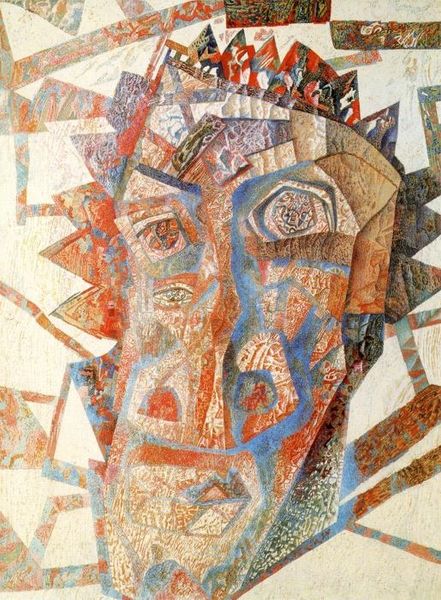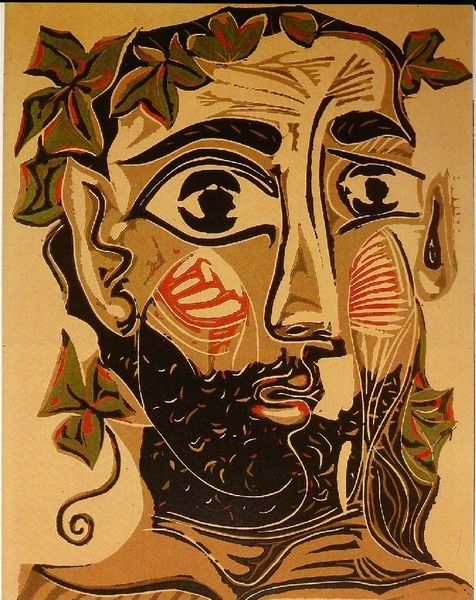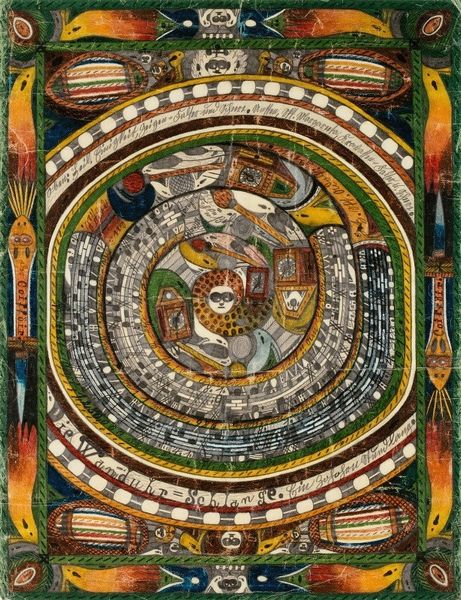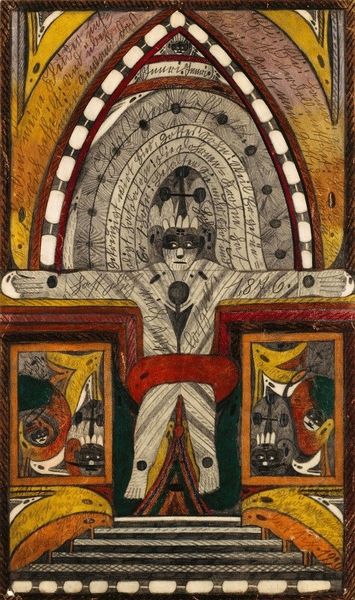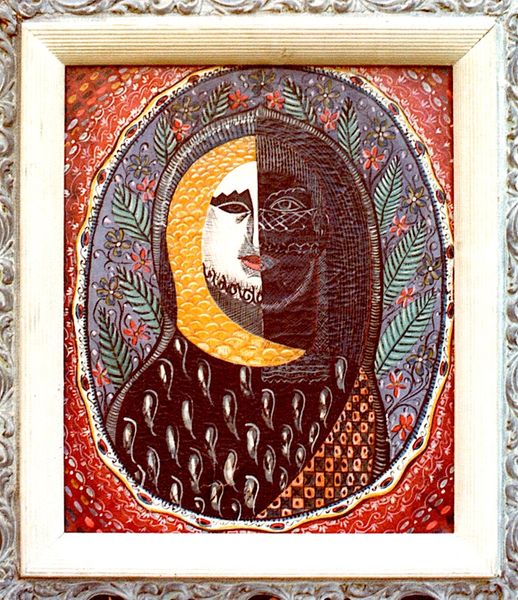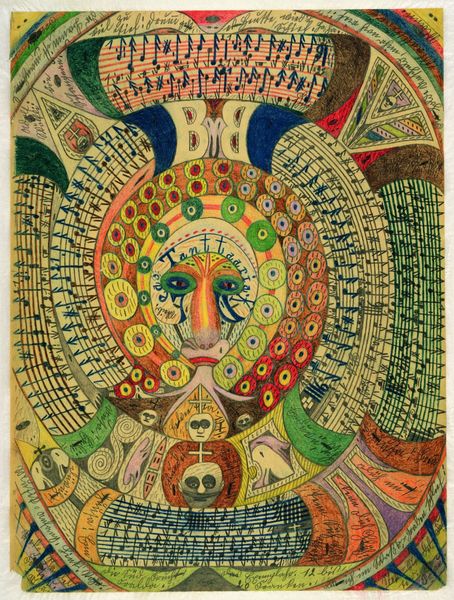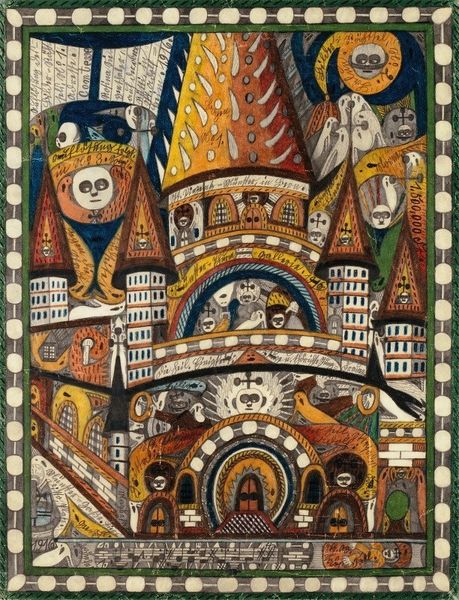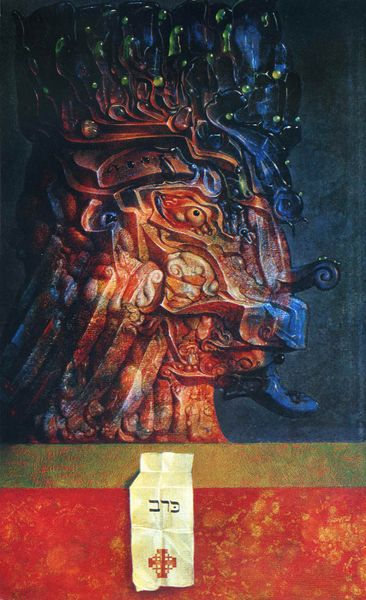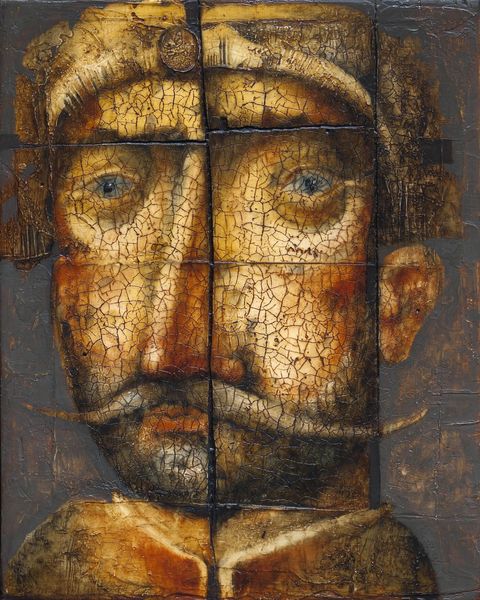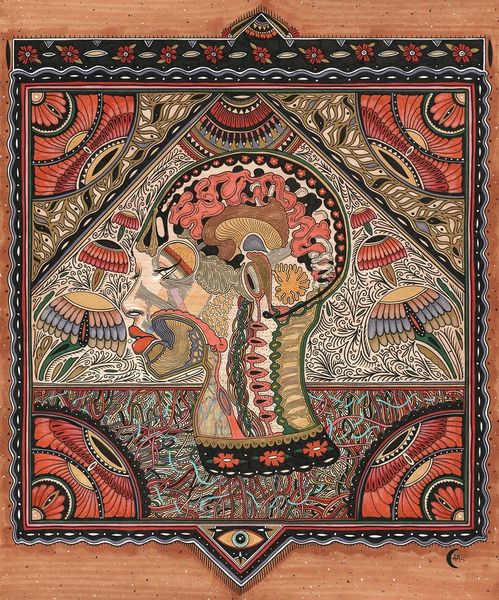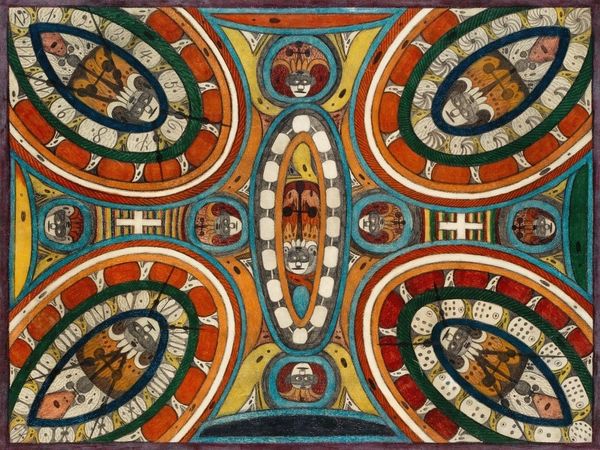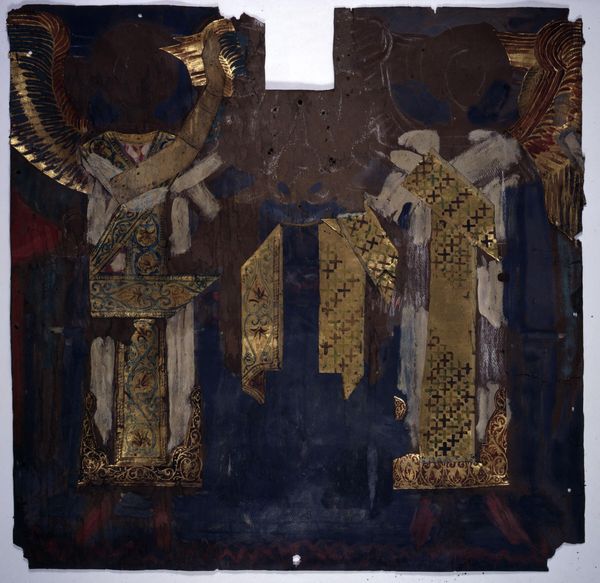
mosaic, mixed-media, collage, assemblage, metal, wood
#
portrait
#
mosaic
#
mixed-media
#
collage
#
assemblage
#
metal
#
sculpture
#
folk-art
#
wood
Dimensions: 22 x 22 cm
Copyright: Sergei Parajanov,Fair Use
Editor: So, here we have Sergei Parajanov’s “Portrait of Daniel Olbrychski,” made in 1981. It's a mixed-media assemblage… really striking. I’m fascinated by the incorporation of watch parts and what looks like fragments of porcelain. It's chaotic, yet somehow elegant. How do you interpret this work, given its context? Curator: This portrait reflects Parajanov's own tumultuous relationship with the Soviet regime. Think about it: Olbrychski was a symbol of Polish cinema, and Parajanov was working in a system that often suppressed artistic freedom. The use of found objects – broken china, watch parts – they are not just materials. They are visual metaphors for a fragmented society and perhaps a broken self. Where do you think the tension lies within the work? Editor: I see the tension in the contrast. The "preciousness" of the materials against the way they are haphazardly put together…it challenges traditional portraiture. There’s a subversion of the heroic image here. Is Parajanov commenting on celebrity? Curator: Exactly! He elevates Olbrychski but simultaneously deconstructs the notion of celebrity, almost as if to hint on the idol’s temporality, which comes through particularly clearly with the use of the time pieces. These were very personal choices, often referencing folk art traditions. Can we really divorce the artistic choices from political statements? Editor: Probably not in this case. So, the portrait is more than just a representation of Olbrychski; it’s a statement on artistic and personal freedom within a constrained socio-political landscape. Curator: Precisely. And don’t forget the museumification of that context after its fall! The politics of imagery don't simply vanish. Editor: I hadn’t thought about it like that. It gives the artwork more layers to unpack, even now. Curator: Indeed. That's how artistic voices survive.
Comments
No comments
Be the first to comment and join the conversation on the ultimate creative platform.
